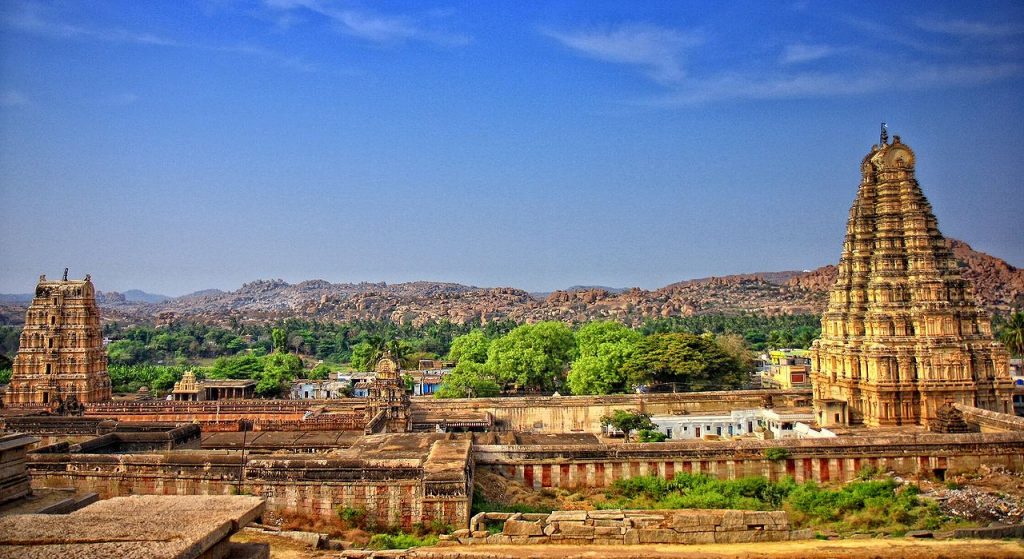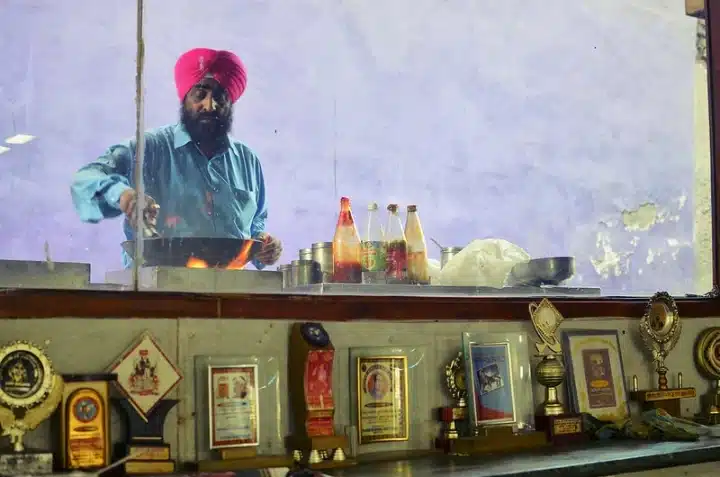If you were a Roman merchant in the 1st century BCE, there’s a good chance you’d find yourself on a voyage to India on business. You’d start your journey at a Roman port, sail across the Mediterranean to Alexandria in northern Africa, then trek overland to the Red Sea. From there, you’d take another ship, hugging the eastern coast of Africa and crossing the Arabian Sea to reach India’s western shores. Your first stop? Muziris.
Ancient Roman maps featured Muziris because it was once a bustling hub, favoured by various empires for its strategic location. It was even dubbed “the first emporium of India” by ancient Roman authors. However, Muziris is no longer found on modern maps, with only evidence suggesting it might have been located in what is now Kerala. Intrigued by this historical puzzle, team Savaari embarked on a road trip by booking a cab from Kochi in search of the grand but forgotten city of Muziris, and our findings are shocking.
Finding Muziris – The lost city
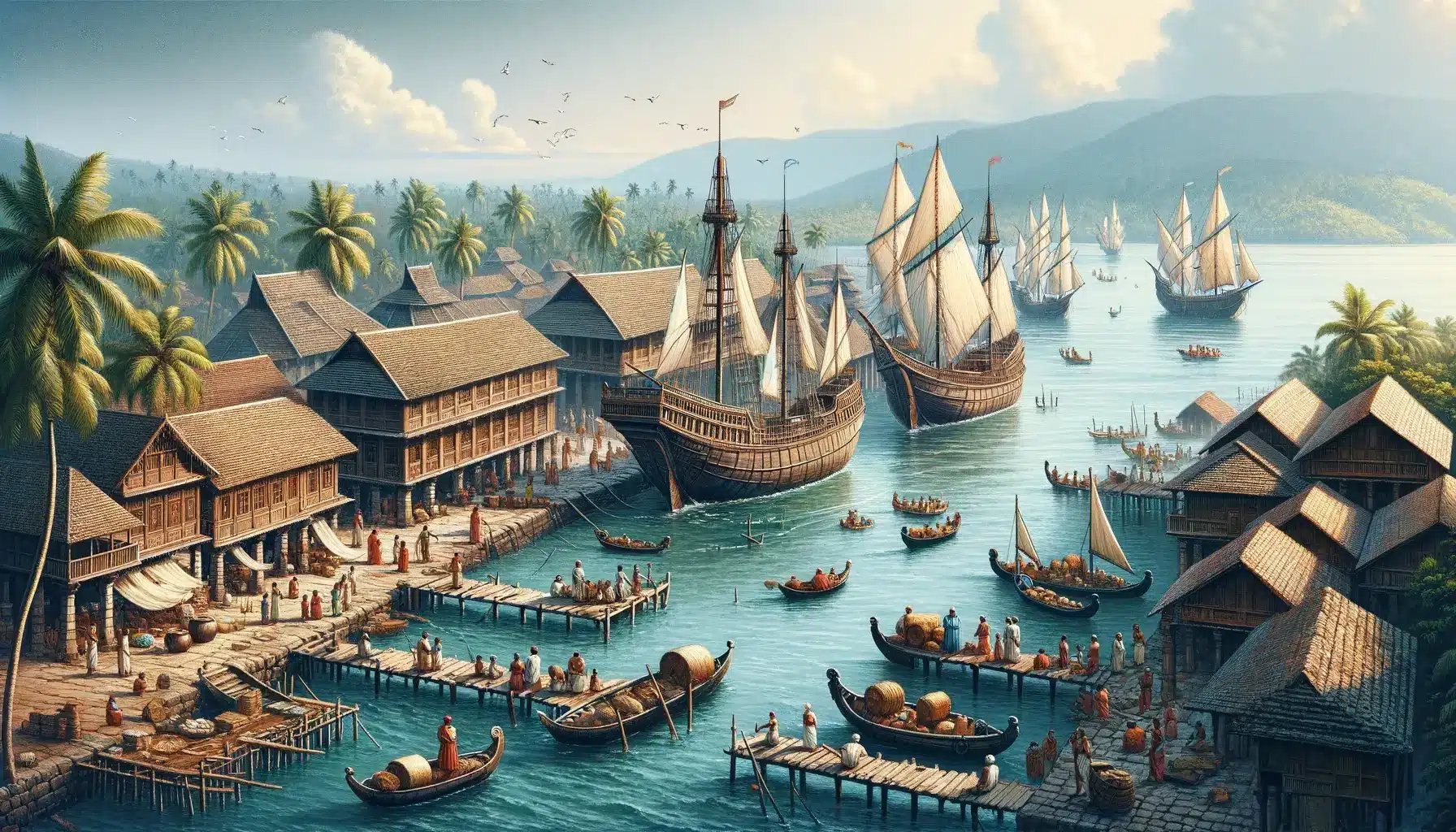
Accompanied by a team of travel experts and our driver Thomas from Savaari, we set off on a journey to trace the ancient city of Muziris. As we drove through the scenic roads bordered by coconut trees and the lush greenery of Kerala, numerous questions about our adventure surfaced. Before embarking, we had enlisted the help of historian Binu Cherian, who was willing to assist us in our search for Muziris. After meeting him in Kochi and enjoying a delicious breakfast of Puttu Kadala, as recommended by Thomas, we continued our journey to the banks of the Periyar River on the Malabar Coast in Thrissur. It was here that we began to unravel the mystery of Muziris.
Ancient Muziris – Kerala’s historic portal to global trade
As we travelled towards the banks of the Periyar River, Mr Binu provided some background. He explained that the history of Muziris started in early 3000 BC when Babylonians, Assyrians, and Egyptians came to the Malabar Coast in search of spices. The Arabs and Phoenicians soon complemented this influx of Middle-Eastern traders. Over the centuries, Muziris emerged as a critical gateway, connecting this region to various cultures, religions, and economic developments worldwide. It served as a vibrant port where travelers, merchants, missionaries, and eventually colonisers from diverse nations like the Greeks, Romans, Jews, Portuguese, Dutch, Chinese, and British converged, incorporating Muziris into global trade maps.
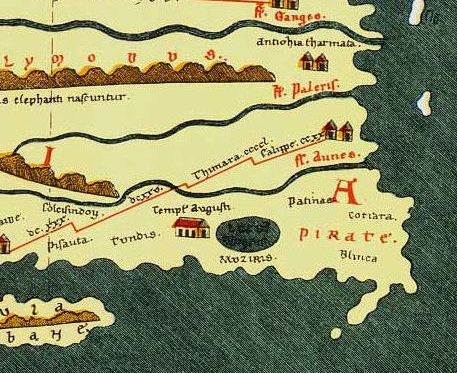
Muziris thrived in the 1st century BCE under the rule of the Cheras, with their centers at Muchiri and Kuroor. The region’s prosperity is highlighted in tales of Chera kings like Perunchottuthiyan Cheralathan, reputed to have generously provided for warriors of the epic Kurukshetra war. The epic Ramayana mentions Muziris as “Murachipattanam,” where Sugreeva’s scouts passed through during their search for the abducted Sita.
As Kerala became a prominent spice trade centre, Muziris stood out as the pivotal port. Ancient Sangam literature recounts Roman ships arriving laden with gold, which they exchanged for prized Malabar pepper. The city appears prominently on the Tabula Peutingeriana, a fifth-century map of the world as seen from Rome. Celebrated in ancient texts, Greek and Roman scholars like Pliny and Strabo documented its significance, with Pliny even hailing it as ‘the first emporium of India.’ That’s when we learnt that this bustling port was not just Kerala’s link to the world but also a key to unlocking much of Kerala’s ancient history.
Pepper Kingdom – The spice that built port Muziris
What captivated us most was that it wasn’t gold or diamonds that drew merchants to Muziris, but rather its “black gold”—pepper. This spice, now a common staple, was once so valuable that it could be traded for gold. Mr Binu told us that Port Muziris was often called the “Pepper Kingdom” since it was a bustling trade hub where global traders converged. They exchanged a variety of goods, such as fish sauce, ceramics, and horses, for the famed black pepper of Port Muziris, and even gold! The Roman philosopher Pliny the Elder noted that the Romans invested between 50 to 100 million sesterces annually in eastern trade, a significant portion of which was earmarked for acquiring Muziris’s black pepper.
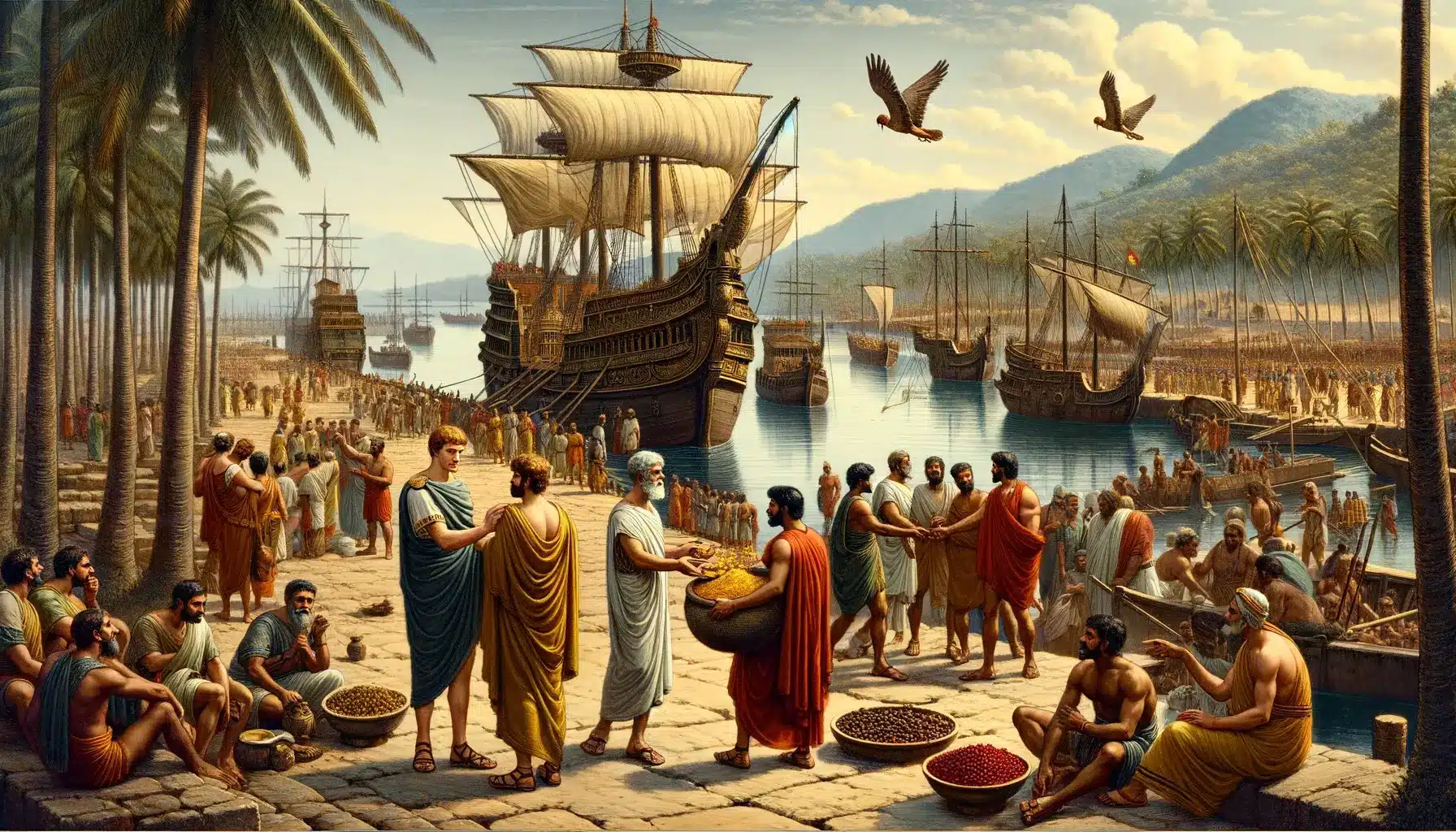
The Romans’ obsession with pepper was so intense that they carried it along on their conquests across Europe and Northern Egypt, even constructing specialised pepper storage facilities known as Horrea Piperataria. But why this obsession? In the ancient world, pepper was revered as a panacea capable of curing numerous ailments—from digestive issues to snakebites. It was also a beloved ingredient in Roman cuisine. The Apicius, one of the oldest known cookbooks from 1st-century Rome, features black pepper in nearly every recipe. Muziris thrived economically, primarily driven by the immense Roman demand for its pepper.
However, the influence of Port Muziris in the pepper trade extended far beyond Roman times. Centuries later, a figure known as the Pepper Queen in Karnataka would base her diplomatic relations with the Portuguese around this valuable spice, highlighting how Muziris set the stage for a pepper trade that would continue to inspire and shape economies and cultures for generations.
Fading fortunes – How Muziris vanished with the Roman Empire
We were particularly intrigued by how Muziris could completely vanish from the map—it seemed almost impossible. Mr Binu explained that Muziris had once flourished remarkably due to its bustling trade. However, the city’s fortunes were closely linked to the Roman Empire, which began to decline by the end of the 5th century CE. As the Roman demand for black pepper dwindled, so too did the wealth flowing into Muziris. The city remained an active port but never regained the heights of prosperity it saw during the Roman era.

Muziris continued its trade activities until a catastrophic event in 1341 CE—when significant geological changes due to a flood and earthquake altered the Periyar River basin on the Malabar Coast, leading to port Muziris’s disappearance from the map. Persistent rain, possibly lasting weeks, might have contributed to the disaster, as suggested by the 14th-century Moroccan traveler Ibn Battuta, who notably avoided Kochi and Kodungallur, possibly due to this catastrophe. Mr Binu told us that several historians theorise about a potential tsunami that led to the port’s demise. Over centuries, natural ports often succumb as river mouths fill with sediment, leading to their gradual decline. In the case of Muziris, without modern dredging technology, accumulated mud and debris likely obstructed the harbor, preventing ships from docking. This marked the end of a golden era, much like the submerged lost city of Dwarka.
The aftermath of Muziris and the rise of new ports
The Muziris port vanished in a deluge. After the “disappearance” of Muziris, we learnt that Kollam became the key port city. Spices could have been taken to Kollam through Kochi. Though trade shifted to Kollam after Muziris, the Kochi port had started taking shape by then. Chinese emperor Yongle’s ambassador Cheng Ho’s team member Mahuvan talks about Kochi in 1400 itself.
During this time, Italian traveler Nicolo Conti came to Kochi, too. However, Kochi earned importance as a trade point after the arrival of the Portuguese. During the torrential rains, the floods that wiped out Muziris also led to the formation of two islands, Kodungallur and Kochi. Kochi, with its own intriguing history and mysteries, offers a wealth of stories to explore, which you can discover in this detailed guide to Kochi.
The revival of port Muziris – An accidental rediscovery
Mr. Binu shared with us that Muziris had been forgotten for centuries until a fortuitous event unfolded. On a rainy day, in a village along the banks of the Periyar River in Kerala, a group of children stumbled upon some unusual beads and coins while playing. These artifacts hinted at the area’s rich, multicultural past. Following these discoveries, Muziris has once again entered historical conversations spurred by extensive archaeological work along the Kerala coast. This revealed substantial evidence about its location and significance.
Archaeological excavations indicate that the site was initially settled by indigenous “Megalithic” (Iron Age) people, with later contact with the Romans during the early Historic Period. The search has centered on two primary locations: Kodungallur and Pattanam, each yielding significant clues and artefacts linking them to the ancient port city.
Kodungallur – The historical gateway to diverse cultures
Kodungallur, situated north of Kochi, was our first destination, recognized as the probable location of ancient Muziris. The town, located north of Kochi, has a rich history in international maritime trade and religious diversity. Kodungallur is considered to be the site of ancient Muziris. It was through this port that three different religions – Islam, Christianity, and Judaism – entered India and co-existed in harmony. Mr Binu told us that it was here that the Cheraman Juma Masjid, India’s first mosque, built in AD 629, stands. The mosque was commissioned by Malik Deenar, a Persian companion of the Islamic Prophet Muhammad, at the behest of Cheraman Perumal, a Chera king and the first Indian to convert to Islam.
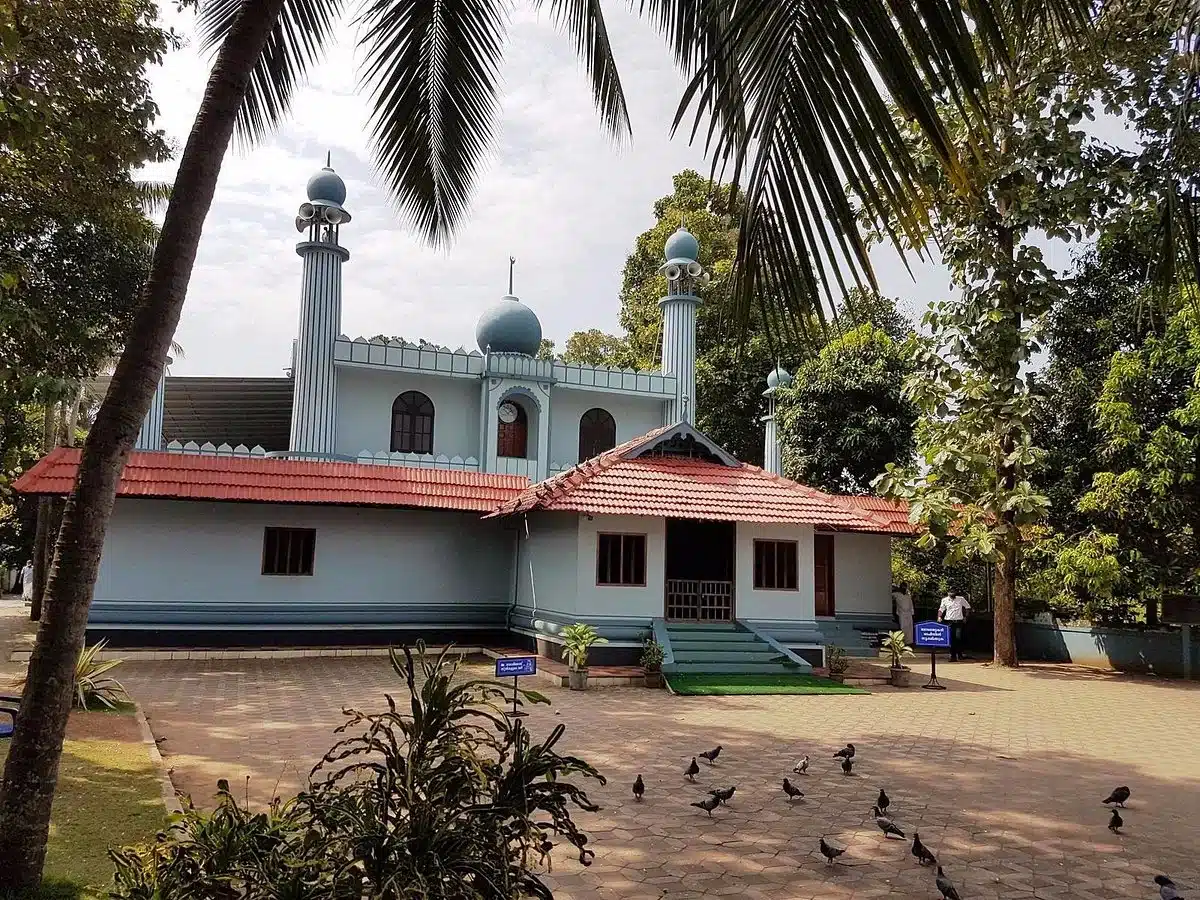
He also told us that the region’s history also intertwines with Christianity, as it is believed that the Apostle St. Thomas landed here in the middle of the 1st century CE and established several churches. Not too far from this area is the Paradesi Synagogue, the country’s oldest synagogue. This depth of religious and cultural interaction underlines Kodungallur’s historical importance and its potential as the site of Muziris. It also illustrates the evolution of Kerala into a multi-religious hub. This detailed blog lists all the spiritual places in Kerala worth visiting.
Places to visit in Kodungallur
For those visiting Kodungallur, make sure to visit these historically significant sites to truly appreciate the area’s heritage and its role in shaping diverse cultural and religious landscapes in India.
- Cheraman Juma Mosque: This is a key pilgrimage center in Kodungallur. According to legends, it was established in 629 CE by Malik Bin Dinar and is significant for being the first mosque in India where Juma prayers were offered.
- Kodungallur Sree Kurumba Bhagavathi Temple: Dedicated to Goddess Bhadrakali, a form of Mahakali or Durga, this temple is revered throughout Kerala.
- Kottappuram Muziris Fort (remnants): Known also as Fortaleza da São Tomé, or Cranganore Fort, this site is under excavation to unearth remnants of the historic fort. Artifacts found include coins, door hinges, cannon balls, and tiles with non-indigenous characteristics.
- Marthoma Church, Azhikode: Also known as the Marthoma Pontifical Shrine, this site is located 6 kilometers from Kodungallur. It is historically significant as the arrival point of St. Thomas in 52 CE. The church is considered the first of the seven churches established by St. Thomas in Kerala.
- Paravur Synagogue: This unique synagogue encapsulates the rich history of the Jewish community in Kerala, which began when King Bhaskara Ravivarman (962–1019) granted Jews special privileges, including the right to build synagogues.
Despite its rich history, archaeological efforts at Kodungallur, which began in 1945, initially revealed only artifacts dating back to the 13th century. Further excavations in 1969 by the Archaeological Survey of India at Cheraman Parambu, located 2 km north of Kodungallur, also primarily uncovered items from the 13th to the 16th centuries. However, the historical narrative of Kodungallur took an exciting turn in 1983 when a significant hoard of Roman coins was discovered at a site approximately 1.2 km from the town in a village called Pattanam.
Pattanam – Piecing together the story of Port Muziris
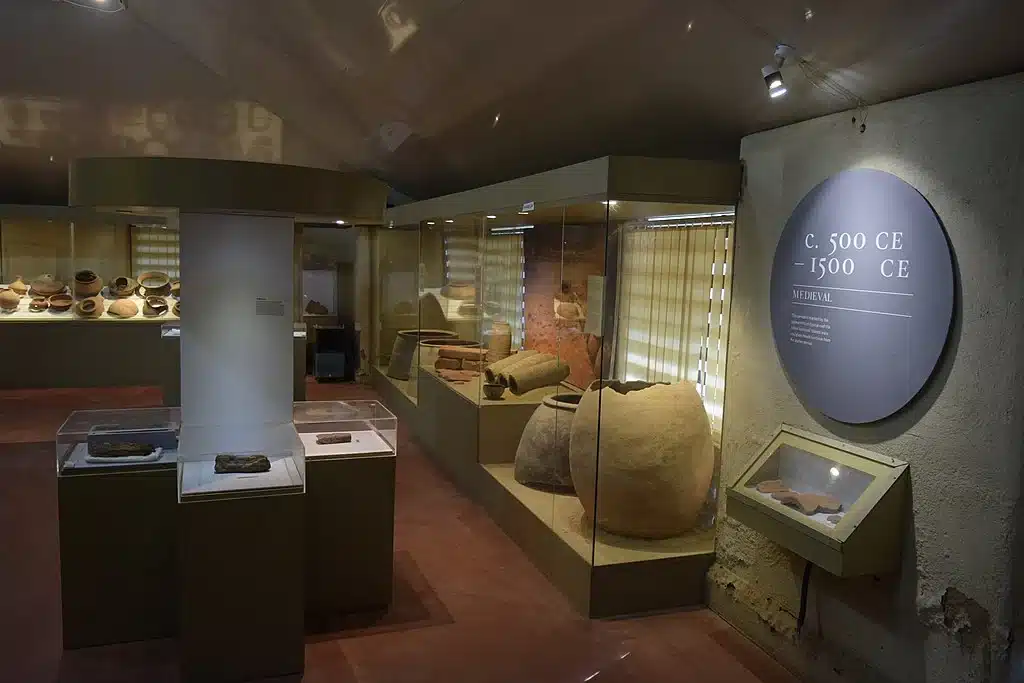
After leaving Kodungallur, our driver took us on a 20-minute ride to Pattanam, a village in Ernakulam District, Kerala, located 37.5 km from Kochi. The Pattanam excavations were the first ever multi-disciplinary excavations undertaken in Kerala. The main objective of the excavation was to search for archaeological evidence that would help to locate/identify an early historic urban settlement and the ancient Indo-Roman port of Muziris or Musiri on the Malabar Coast. Through various findings, including a vast array of Roman artifacts, the site painted us a vivid picture of a bustling trade center that was crucial in the network of global commerce during ancient times.
Archaeological discoveries in Pattanam
- Roman Artifacts: The discovery of numerous Roman items such as coins, beads, pottery, and an agate-band ring with a sphinx seal at Pattanam underscores the extensive trade relations between the Roman Empire and the local populations in Muziris. These artifacts not only indicate the presence of Romans in the region but also suggest a high level of cultural exchange and economic integration.
- Urban Planning and Infrastructure: Evidence of sophisticated urban planning at Pattanam, highlighted by the alignment of building foundations and the presence of advanced drainage systems and ring wells, points to an advanced civilization with a high degree of organization. Such infrastructure is indicative of a society that values cleanliness, public health, and urban convenience, characteristics typical of prosperous ancient cities.
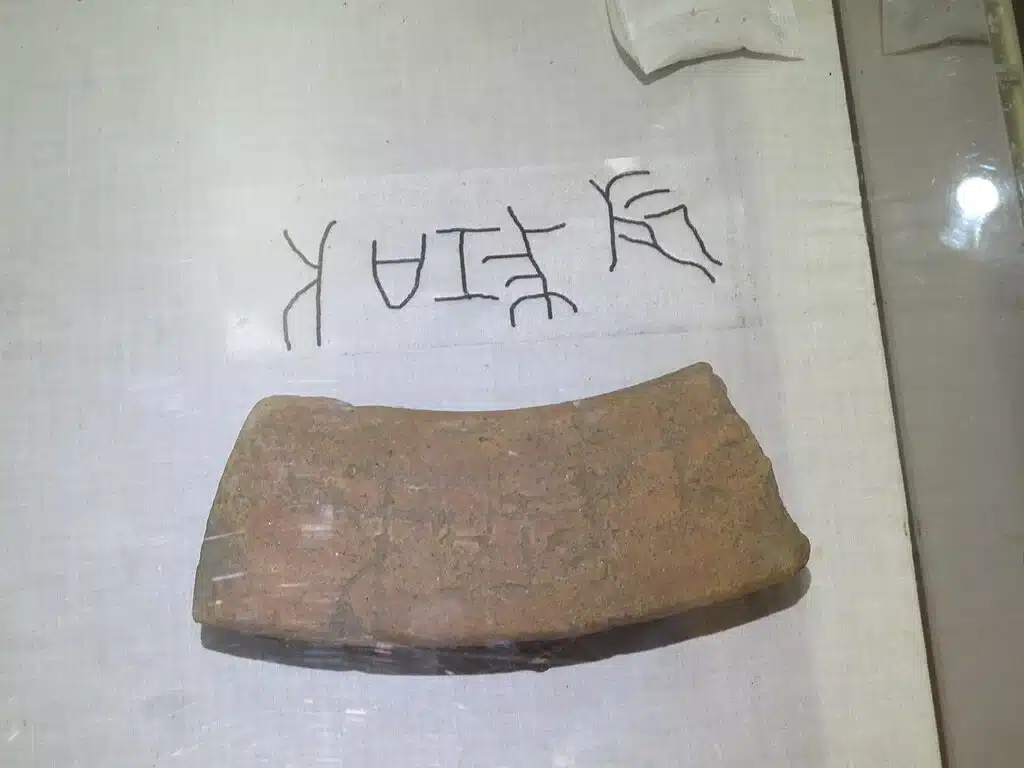
Technological and cultural insights
- Decayed Canoe and Bollards: The discovery of a decayed canoe, mummified in mud, which is 6 meters long and made from Artocarpus hirsutus (a tree common on the Malabar Coast traditionally used for boat making), along with well-preserved teak bollards, provides insights into the maritime technology of the time. These findings highlight the craftsmanship and maritime skills of the people of Muziris, which were crucial for sustaining such an active port.
- Genetic Imprints and Skeletal Analysis: DNA analysis of skeletal remains from the site revealed West Eurasian genetic markers among the local population, pointing to a significant Eurasian presence in Muziris. This genetic evidence further supports the theory of a cosmopolitan hub where people from different parts of the world lived and worked.
Our visit to Pattanam, a prominent archaeological site in India, felt like stepping into a museum, each discovery offering a lesson in history and leaving us amazed. However, despite these significant discoveries, the Archaeological Survey of India (ASI) has called for more research to fully confirm the extent of Eurasian influence and the broader implications of these findings. The ongoing archaeological efforts at Pattanam are crucial for piecing together the rich tapestry of interactions that defined this ancient port city, revealing a multifaceted hub of trade, culture, and technology that played a pivotal role in the ancient world.
Tracing the footprints of Muziris – Where to find its remains
While numerous discoveries have been made, those with a curiosity similar to ours might be eager to delve deeper into the history of Muziris. To explore and learn about the ancient city of Muziris in modern-day India, you can visit several key sites that are actively involved in uncovering and preserving its rich heritage. These sites, spread across Kerala, are integral to ongoing archaeological efforts aimed at piecing together the city’s illustrious past.
Pattanam Excavation Centre & Museum
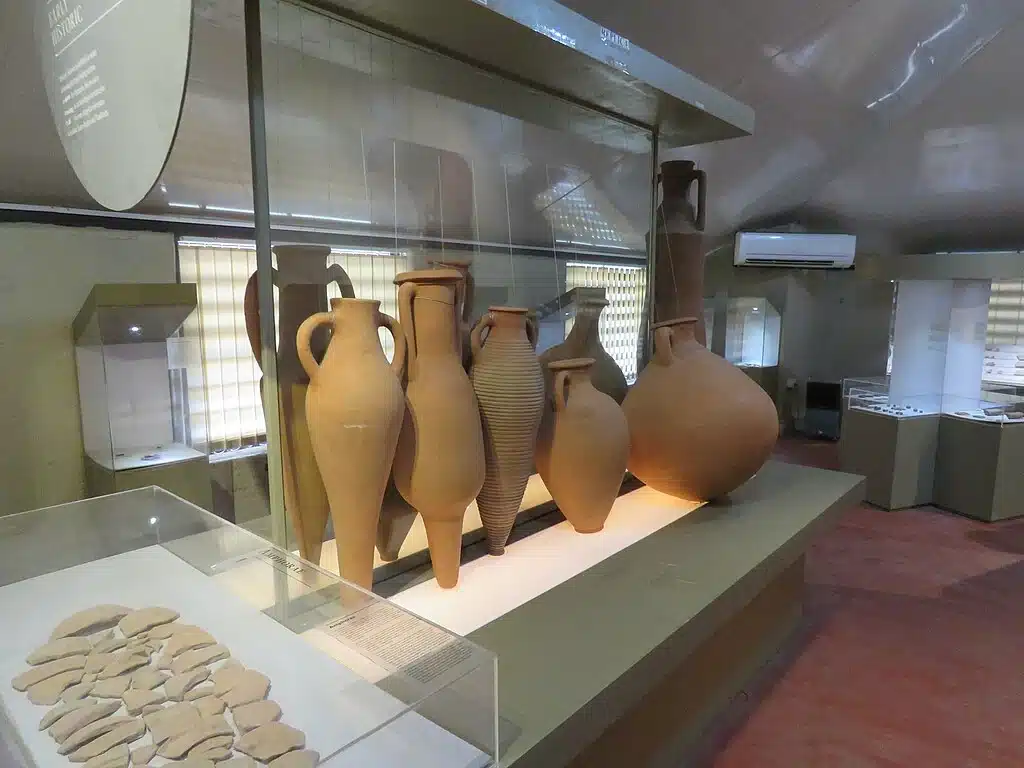
Located just 8 km away from Kodungallur, the Pattanam Excavation Centre & Museum is a prime destination for history and archaeology enthusiasts. Managed by the Kerala Council for Historical Research, this site has been a focal point for archaeological digs since 2007. The museum showcases a variety of artifacts unearthed from the site, dating back to around 500 BC, providing a glimpse into life during the Iron Age. The exhibits include tools, photographs, and detailed explanations of the excavation processes, allowing visitors to deeply engage with the ancient culture and trade activities of Muziris. This site is particularly notable for its role in revealing Muziris’s extensive trade connections with over 40 different locations.
Kochi-Muziris Biennale
The Kochi-Muziris Biennale is the largest art exhibition in the country and the biggest contemporary art festival in Asia. It was founded in 2010 by Kerala-born artists Bose Krishnamachari and Riyas Komu and is another significant venue where the legacy of Muziris is celebrated through contemporary art. Held in Kochi, this biennial event has transformed numerous historical buildings along Kerala’s seafront, including grand colonial warehouses, factories, and the Durbar Hall, into vibrant spaces for showcasing international art. The Biennale not only honours the historical and cultural significance of the ancient port city of Muziris but also integrates it with the modern port city of Kochi. It serves as a platform for reflecting on the past lives, routes, and geographical and intellectual histories of the region.
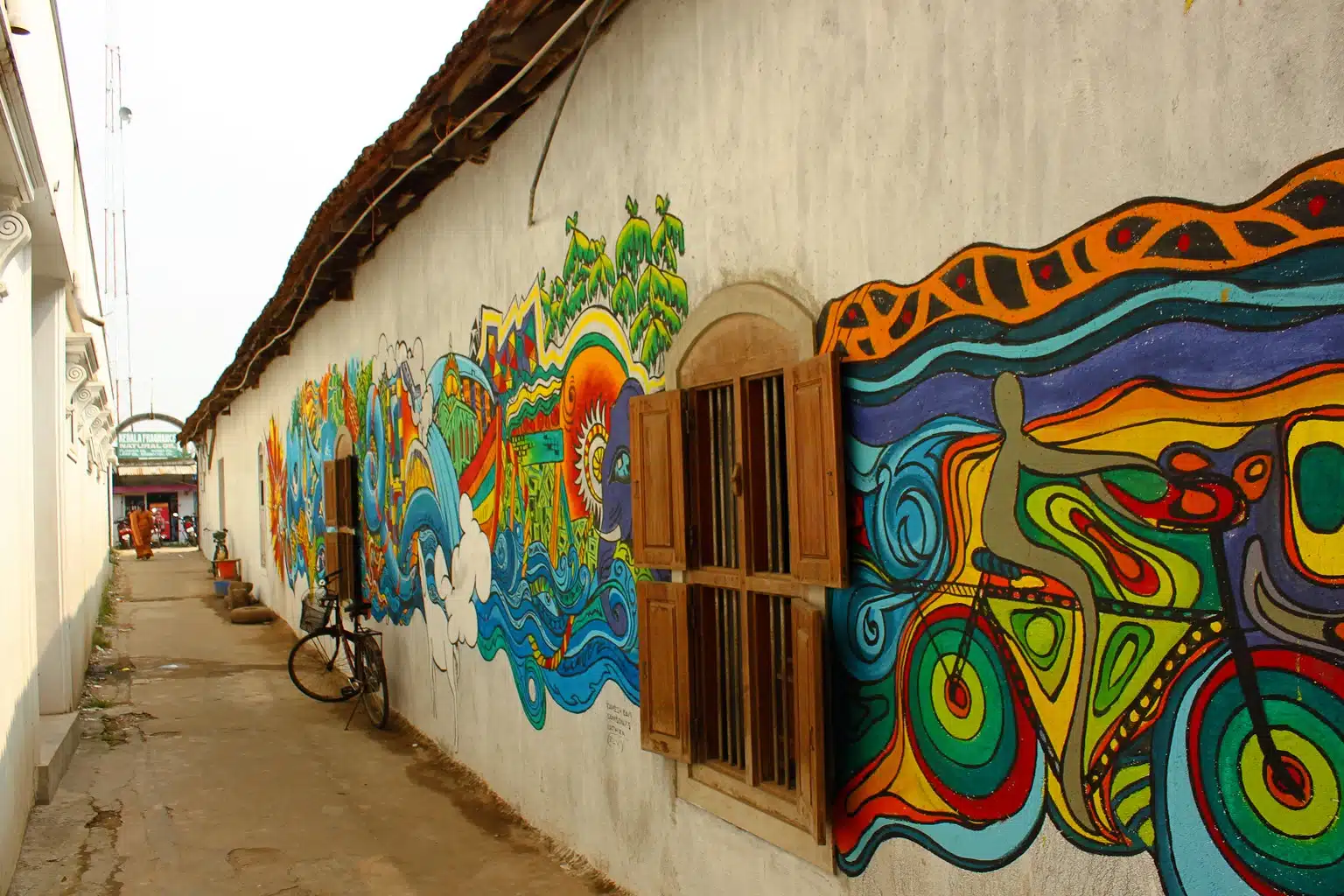
These sites provide educational and cultural experiences that connect visitors with the ancient past of Muziris through both tangible artifacts and interpretive art. The Pattanam Excavation Centre & Museum offers a direct archaeological perspective, while the Kochi-Muziris Biennale explores the city’s heritage through a contemporary artistic lens. Together, they create a comprehensive narrative that celebrates and preserves the history of Muziris, making its rich past accessible to modern audiences and scholars alike.
Why rediscover the remnants of port Muziris with Savaari?
As members of Team Savaari, our journey to uncover the mysteries of ancient Muziris was not just educational but deeply personal. Each site we visited brought its own unique story, making the past come alive in ways we hadn’t imagined, and was like opening a window to the past. Our journey to one of the most mysterious cities in India offered us a unique opportunity to delve into the history of what might have been India’s first interactions with international trade. By booking a car rental in Thrissur, and travelling to Kodungallur and Pattanam—just 20 minutes apart—you can traverse the entire region and immerse yourself in the history and mysteries of this ancient city and its significant role in historical trade networks.
To fully appreciate the historical significance and stories embedded in these locales, consider the convenience and added value of booking a chauffeur-driven Savaari cab. These cabs are not just a means of transport but a bridge to the past, steered by drivers who are well-versed in the local lore and history. Their insights can transform a scenic drive into a comprehensive educational tour, enriching your understanding of the sites you visit. Simply download the Savaari app, and set off on a road trip filled with learning and discovery.
Last Updated on May 7, 2024 by Shabari Shankar



